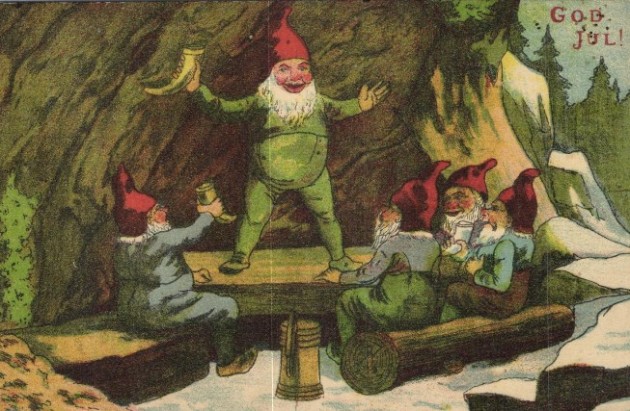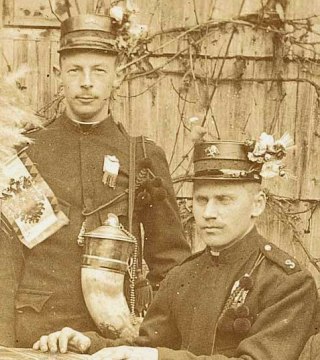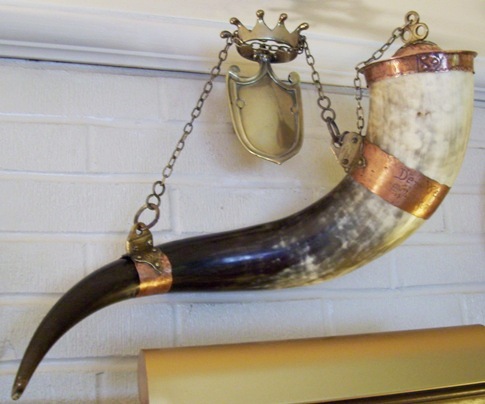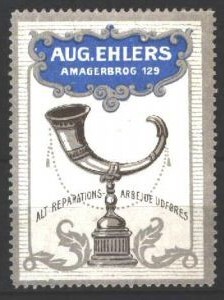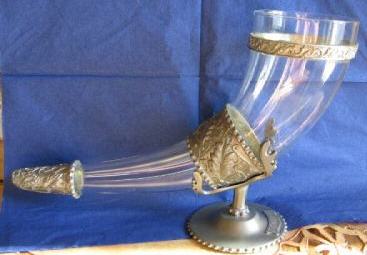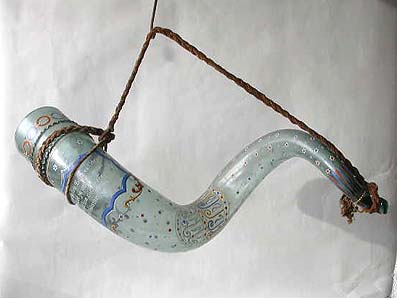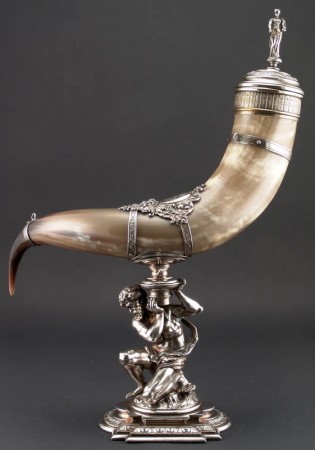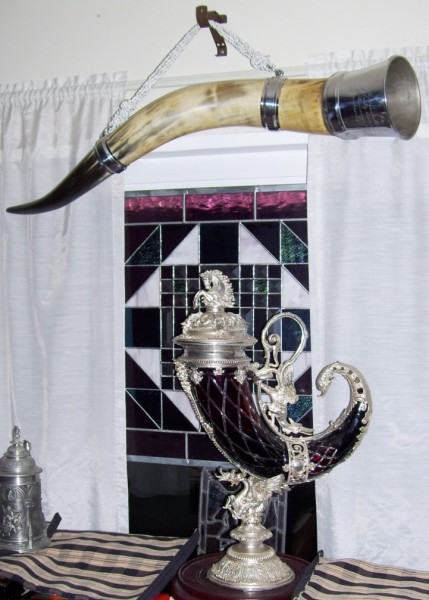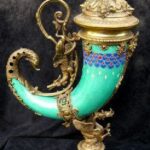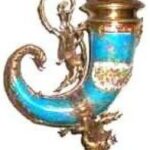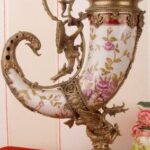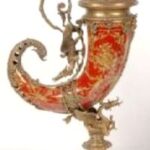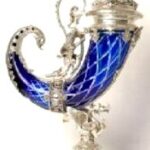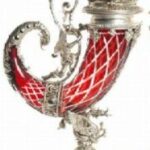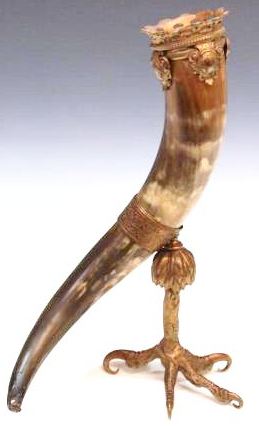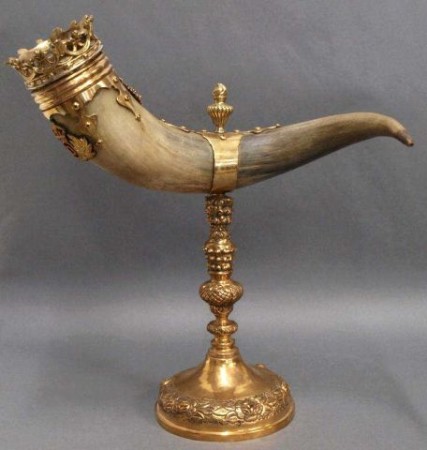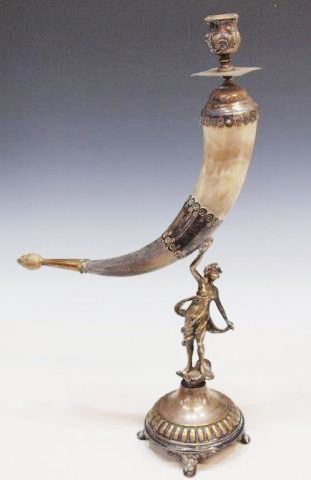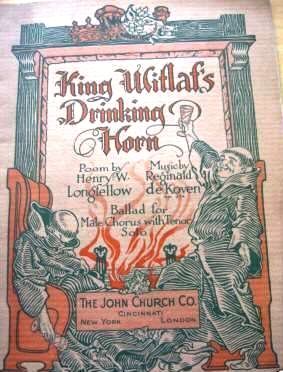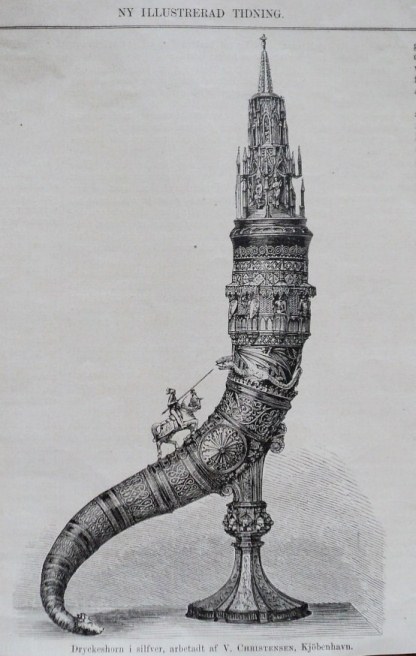
The “Mother” of all drinking horns!
“GREIFEN KLAUE” – Page 2
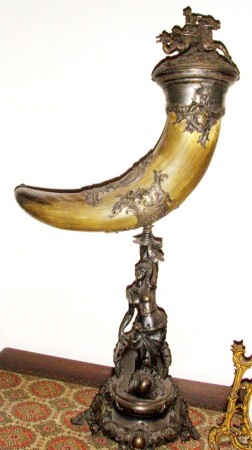
A 38 inch tall drinking horn of silvered brass. Circa 1870.
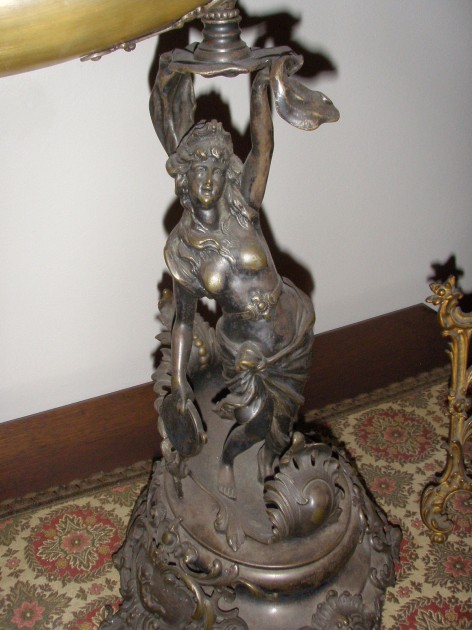
Detail of the ifgural base / supporter. See below photo on mounts on this page for a similar horn by the same maker and an explanation of the finial.
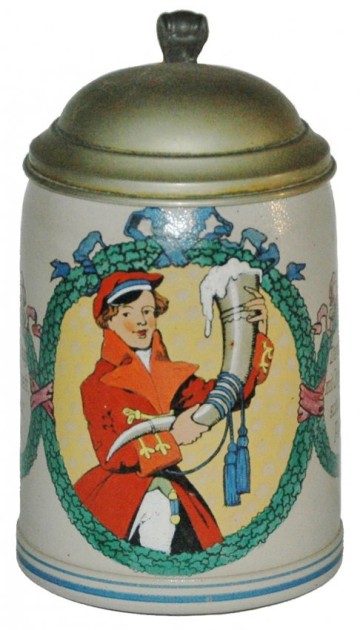
A typical sized drinking horn for a student fraternal organization . It wouls have been passed around and used as a welcome cup for newcomers.
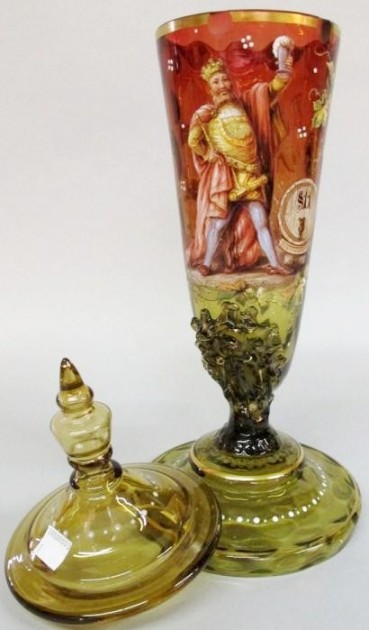
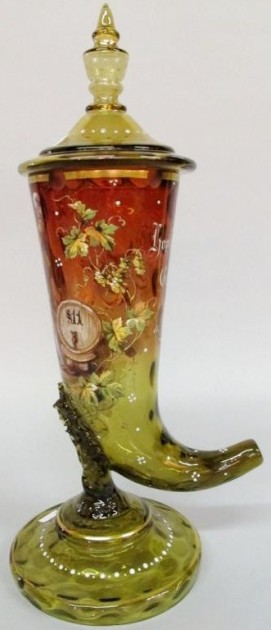
A very nicely enameled 13 inch tall pokal, in drinking horn form, with Gambrinus, King of Beer as the subject. Circa 1890.
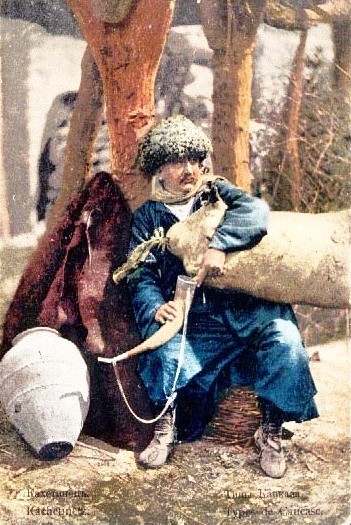
Drinking horns remain an important accessory in the culture of ritual toasting in Georgia (Europe) in particular, where they are known as “khantsi.”
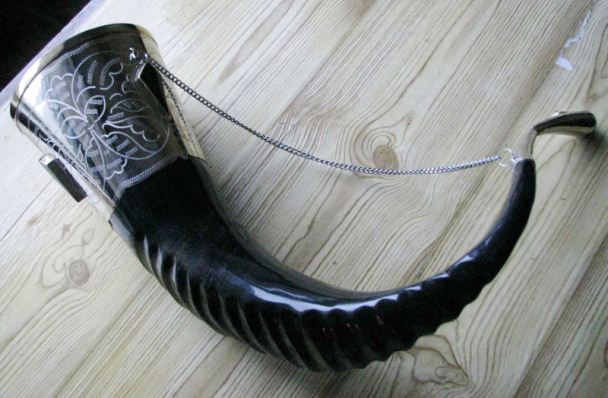
The ad for the new horn shown above; taken from the eBay ad: How it is used is defined.
THIS IS A TRADITIONAL HAND CRAFTED, NATURAL VERY LARGE HORN FOR DRINKING WINE, WITH BEAUTIFUL HAND MADE ORNAMENTS {MOUNTS} FROM MELKHIOR (GERMAN SILVER.)
This horn is made manually by Herman – master of Dagestan – highland in the south of Russia. Dagestan already is much known as the country of masters and artists. There make the world famous weapon and utensils. On this horn there is the brand of master Herman.
This wine horn is made of a horn of the mountain goat and trimmed with German Silver (Melkhior). A pattern with which the horn is decorated, completely unique, such pattern is rendered only by master Herman. Pay attention to the bottom part of a horn which is executed as a tail of a swallow and it is decorated with a color stone.
The horn is ground outside and inside, carefully processed by antiseptics and it is absolutely safe for application in {FOR} food purposes. Otherwise, all bulls were carefully checked and were 100% healthy.
From such horns on Caucasus drink wine on the big holidays, on weddings and funeral. Such horn full of best wine, bring to the guest of honor. HORN is essential instrument of TOASTMASTER-TAMADA during parties. TAMADA proposes toast, drinks FULL HORN of WINE and passes empty HORN to next guest and fills it. Guest proposes next toast and passes HORN further around the table, and so it continues, making party real fun. Mineralnye Vody, Stavropolskiy krai, Russian Federation
A fairly scarce version of a drinking horn from this area.
A 1912 photo of recruitment event for an unknown Austrian City Fire Department. See the mini fire-fighter’s helmet on the lid.
A very unusual semi-professionally made ‘copper’ mounted horn and lid, dated 1890. [FWTD]
An old German ad for an repair shop for broken antiques.
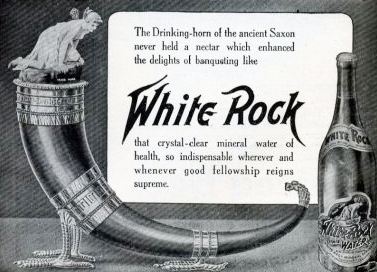
Ad showing antique drinking horns. This USA White Rock ad is from about the 1950’s era.

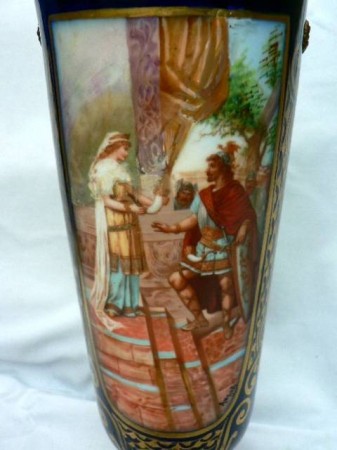
For more info on drinking horns and old rituals, read this: http://www.wyrdwords.vispa.com/heathenry/symbel.html
A Circa 1850’s clear blown glass horn which can come off of it’s stand. A nice novelty.
A blown glass, heavily enameled drinking horn. Circa 1890. About 23 inches long. The maker is assumed to be Josephinenhütte. I have only seen two of these decorative enameled horns in my now 41 years of collecting. Here’s the second above:
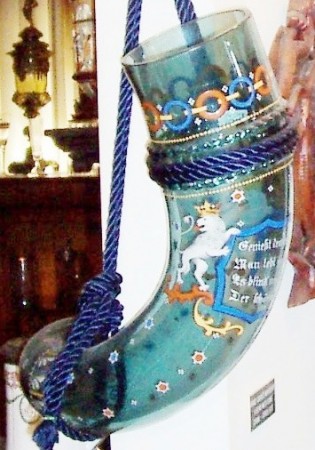
And here is the first. Another by Josephinenhütte, about the same length. [FWTD]
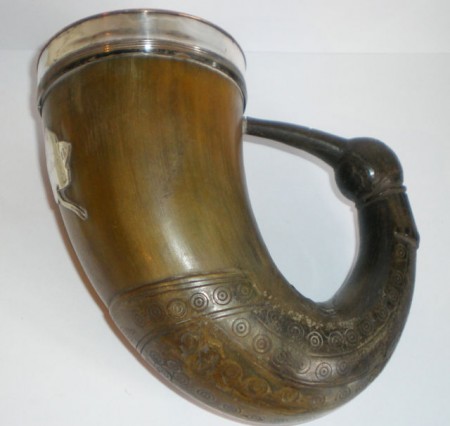
An older small, hand held drinking horn. Seller’s description from eBay (with a few additions by “himself.”) [ 4 -12]:
“A fantastic carved horn drinking vessel. Silver plate rim and internal cup – silver on copper (Old Sheffield Plate .) Super folk art craved horn with the looped horn handle in the shape of a bird. Dates from at least the 18th century ,
it is possible (and probable) that the silver plated rim and internal cup are a later mid to late 18th century addition and that the carved horn is at least of Renaissance age. The carving and design almost looks Anglo Saxon. The carving is very detailed and is decorated with cut circles. The bird form handle is carved with detail;- typical folk art style and design.
The silver plate on copper cup – forms both the rim and the internal cup. There is an ivy shaped shield with the word Kenilworth. (Kenilworth in Warwickshire is famous for its Castle which was built over many centuries from Norman to Elizabethan times and has been the scene of very many famous battles.)
A fascinating piece of folk art carved from a single piece of horn. Absolutely stunning and I feel sure that the prospective purchaser will not be disappointed . Clearly some wear and small areas of loss due to age and use. Approx 6″ x 6″ with a cup dia of 3.25″
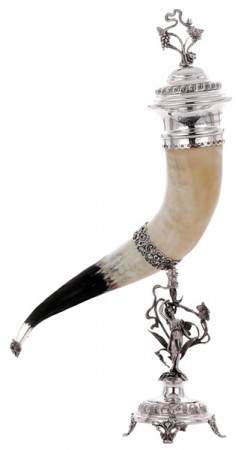
Drinking horn, 26 ” ht., brass, silver-plated, presentation: 15. Deutsches Bundesschiessen, München. 15. – 22. Juli, 1906, silver-plated lid. (tsaco)
Another fine example of a horn with .800 silver mounts. Unknown maker. Probably German or Scandinavian. Circa 1870.
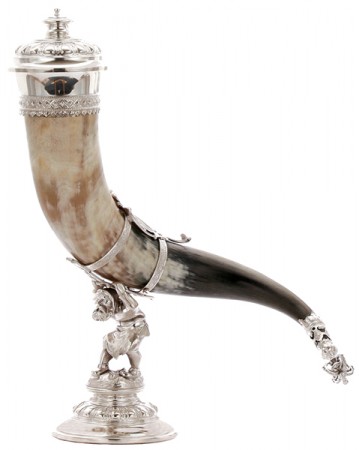
A 20.7 inch, re-silver-plated horn. [TSACO]
A removable carved wooden devil’s head, caped winged arms with claw details, and hoofed legs. Ca. 1900, I believe. Unique?
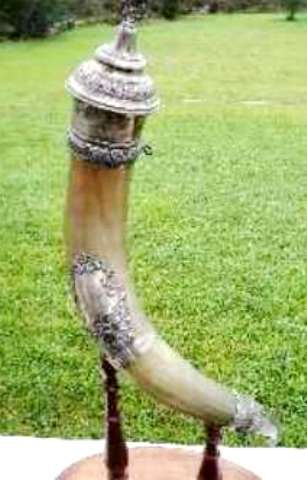
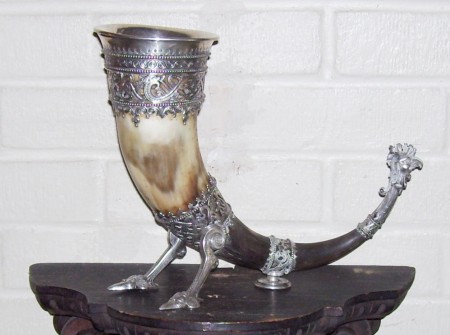
There is a ship on the Bayeux Tapestry (made by the Norman Vikings) that shows a very similar bird’s head:
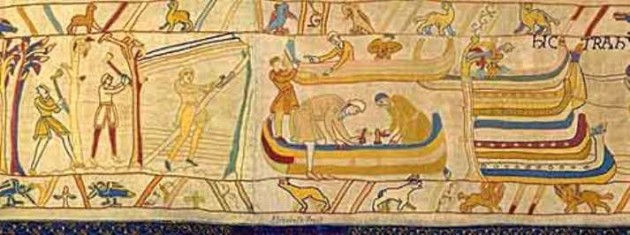
See the bottom boat’s bow = a bird’s head. [blow up to about 150 %]
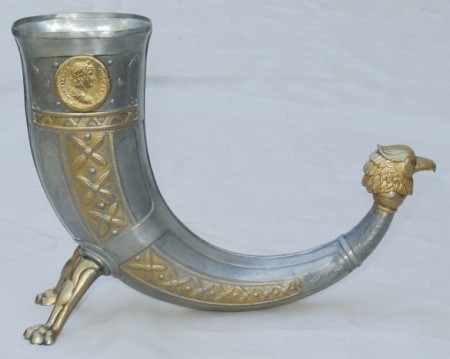
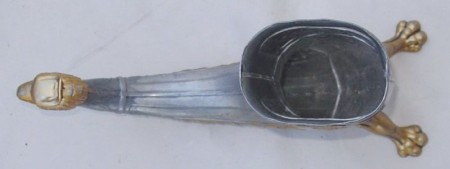
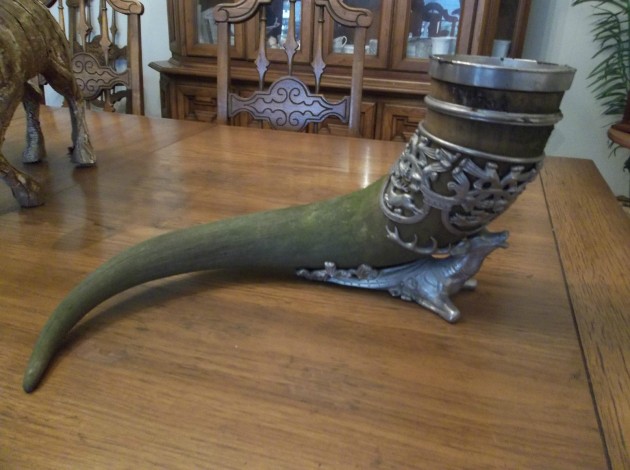
.
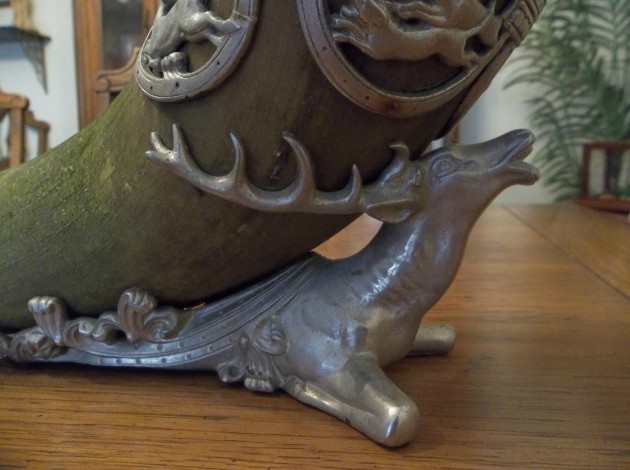
Another modern day horn. The deer as a supporter is not seen often
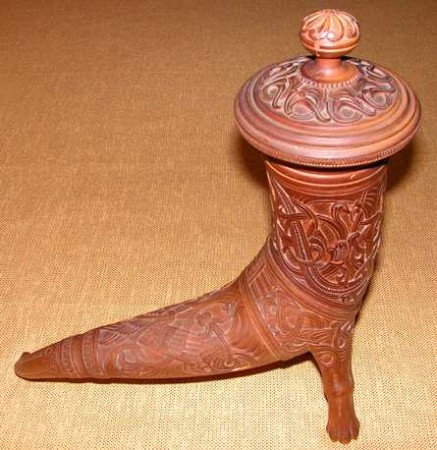
Another Scandinavian beauty, with extensive Norse / Celtic design carving. 10 inches long . Ca. 1900. Scarce
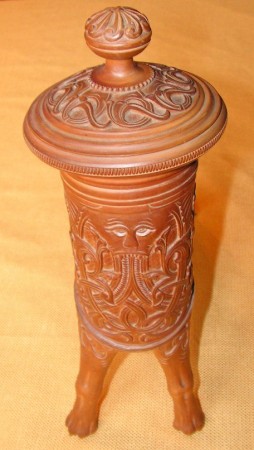
If one looks closely one will see a face carved in the top of the body
.
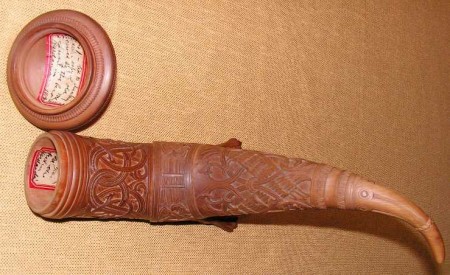
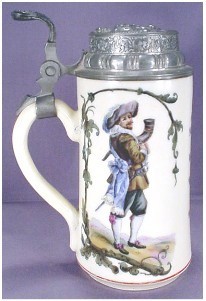
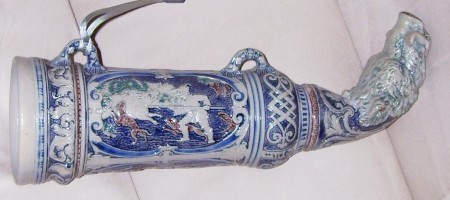
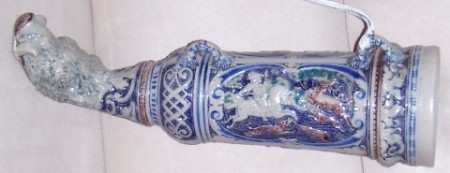
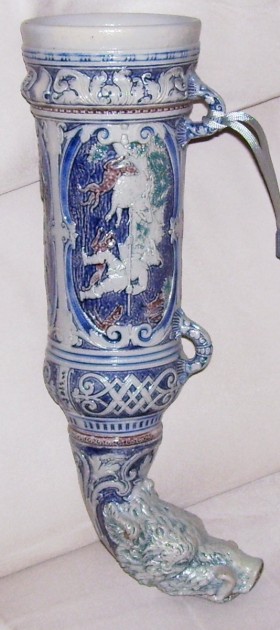
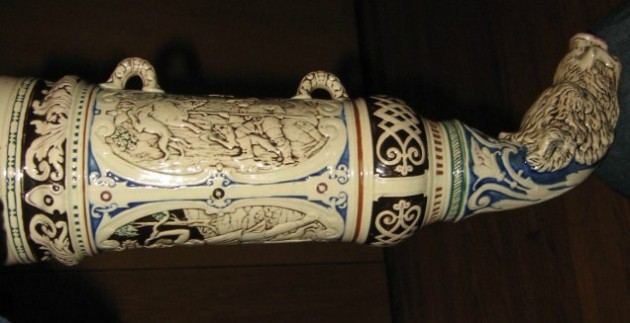
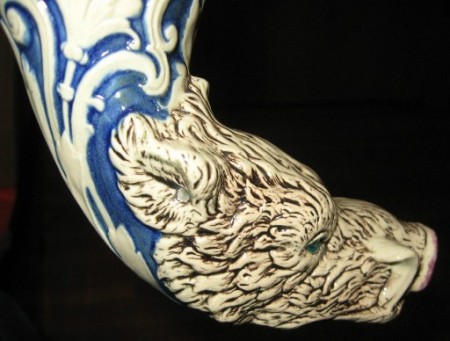
Detail of boar’s head.
![drining horns use '[q]](http://www.steveonsteins.com/wp-content/uploads/2010/09/drining-horns-use-q.jpg)
“Greifen Klaues” – Silver mounts with great dragon end silver finials. [Front] Dated 1630 with scrimshawed battle scenes and the names of the battles [Rear] A special presentation and Dated 1561!

A nicely done brass Griffin claw. Damn shame this horn is not for drinking!
![danish_bronze MAKING A DRINKING HORN [Q]](http://www.steveonsteins.com/wp-content/uploads/2010/09/danish_bronze-MAKING-A-DRINKING-HORN-Q.jpg)
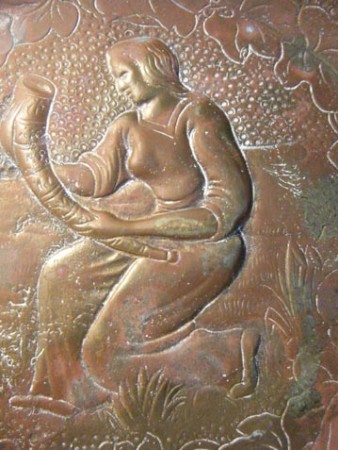
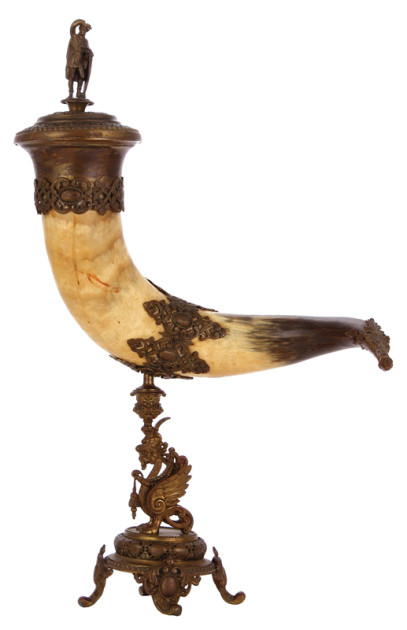
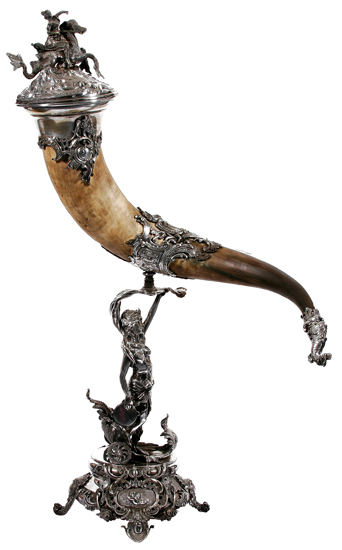
Very large horn with Silver plated mount. Ca. 1880. Maker unknown but not WMF!

CAN’T AFFORD A REAL DRINKING HORN HER IS AN ALTERNATIVE I BELIEVE ▼THIS EXAMPLE WAS ON EBAY IN 4-2014 AND THE BUY IN NOW PRICE WAS $189.00.
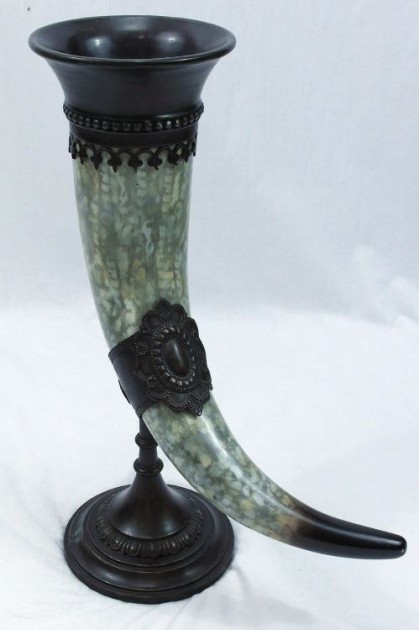
Description:
This item measures 14″ wide, 18.75″ tall, 6.25″ diameter opening, 6.5″ diameter base.
So after seeing all these examples, PERHAPS instead of buying one, now you want to make your own drinking horn?!
Witlaf, a king of the Saxons,
Ere yet his last he breathed,
To the merry monks of Croyland
His drinking-horn bequeathed,–
That, whenever they sat at their revels,
And drank from the golden bowl,
They might remember the donor,
And breathe a prayer for his soul.
So sat they once at Christmas,
And bade the goblet pass;
In their beards the red wine glistened
Like dew-drops in the grass.
They drank to the soul of Witlaf,
They drank to Christ the Lord,
And to each of the Twelve Apostles,
Who had preached his holy word.
They drank to the Saints and Martyrs
Of the dismal days of yore,
And as soon as the horn was empty
They remembered one Saint more.
And the reader droned from the pulpit
Like the murmur of many bees,
The legend of good Saint Guthlac,
And Saint Basil’s homilies;
Till the great bells of the convent,
From their prison in the tower,
Guthlac and Bartholomaeus,
Proclaimed the midnight hour.
And the Yule-log cracked in the chimney,
And the Abbot bowed his head,
And the flamelets flapped and flickered,
But the Abbot was stark and dead.
Yet still in his pallid fingers
He clutched the golden bowl,
In which, like a pearl dissolving,
Had sunk and dissolved his soul.
But not for this their revels
The jovial monks forbore,
For they cried, “Fill high the goblet!
We must drink to one Saint more!”
Written by: Henry Wadsworth Longfellow.
FOR AN EXCELLENT ARTICLE ON THE LONGEST GRIFIN CLAW I HAVE EVER SEEN, PLEASE SEE THE COPYWRITTEN ARTICAL ON: “Griffin’s Claw” of St. Cuthbert @http://learn.columbia.edu/treasuresofheaven/relics/Griffins-Claw-of-St-Cuthbert.php
YOU MAY ALSO WISH TO READ : http://en.wikipedia.org/wiki/Drinking_horn
[END – SOK – 51 – 3D]
 “Life’s like a bird, it’s pretty cute until it shits on your head.”
“Life’s like a bird, it’s pretty cute until it shits on your head.”
